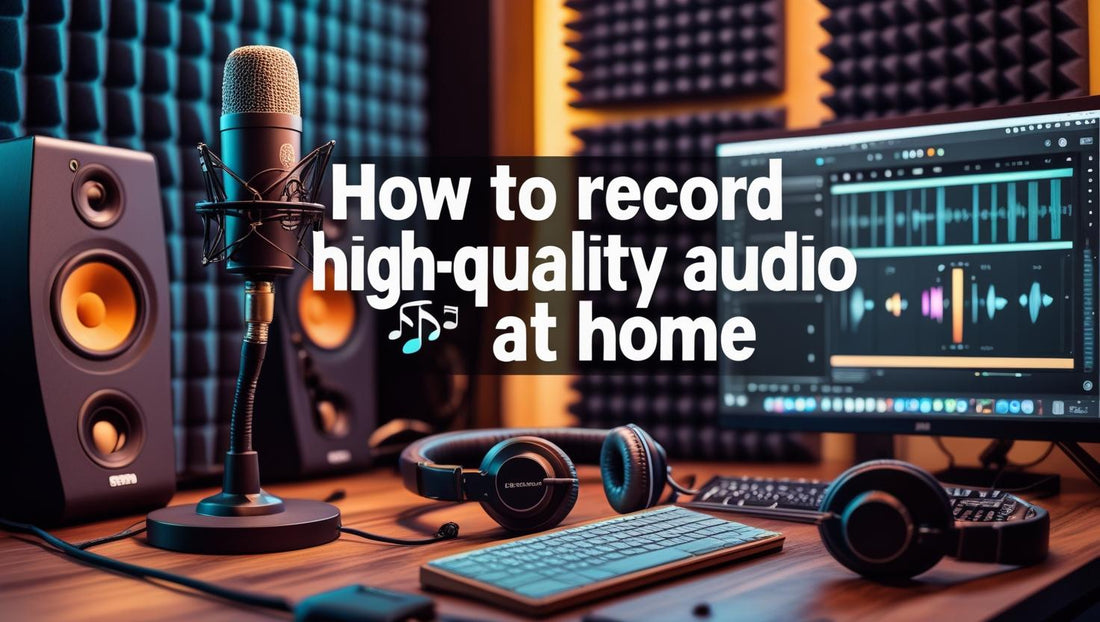
Whether you're launching your first podcast or leveling up your current setup, recording high-quality audio at home is more achievable than ever. You don’t need a fancy studio—just the right tools, some simple techniques, and a little know-how. Here’s how to make your podcast sound professional, even from your kitchen table.

1. Start with the Right Microphone
Your mic makes the biggest impact on sound quality. USB mics are great for beginners, while XLR mics paired with an audio interface offer greater control and clarity for serious creators.
- Beginner pick: Blue Yeti USB Microphone
- Pro pick: Shure SM7B + Focusrite Scarlett 2i2 Interface
2. Record in a Quiet, Treated Space
Avoid echoey rooms or noisy environments. A small, carpeted room with curtains and soft furniture works best. Want to go the extra mile? Add foam panels or a portable vocal booth to absorb unwanted noise.
- Quick tip: Closets full of clothes make surprisingly great recording spaces.
3. Use Headphones While Recording
Always monitor your audio with closed-back headphones. This helps catch background noise, mic pops, or awkward audio levels before they ruin a good take.
4. Check Your Mic Technique
- Stay 4–6 inches from the mic.
- Speak directly into the mic, not at an angle.
- Use a pop filter to reduce harsh “P” and “B” sounds.
- Proper mic placement can instantly upgrade your sound.
5. Control Your Recording Environment
Turn off fans, AC units, or anything else that hums in the background. Record when it's quiet—late at night or early in the morning often works best.
6. Choose Quality Recording Software
Free or paid, your recording software (also called a DAW) should offer reliable editing tools and clean export options.
- Beginner-friendly: Audacity (Free)
- Advanced option: Adobe Audition or Hindenburg
7. Record at the Right Settings
For podcasting, aim for:
- 44.1 kHz or 48 kHz sample rate
- 16-bit or 24-bit depth
- Mono or Stereo depending on your style
These settings ensure clarity without bloating file sizes.
8. Edit Thoughtfully
Use EQ, compression, and noise reduction to polish your recording. Many podcast editing apps offer presets that make this process easier—even for beginners.
9. Export in Podcast-Ready Format
Export your final audio as an MP3 at 128kbps or higher, using a constant bit rate (CBR). This keeps your file size small but your sound quality crisp.

Final Thoughts
You don’t need a professional studio to produce great audio. With the right gear and a few simple best practices, your home setup can rival some of the best in the industry.
Still building your home studio? Check out our recommended podcast gear bundles →

